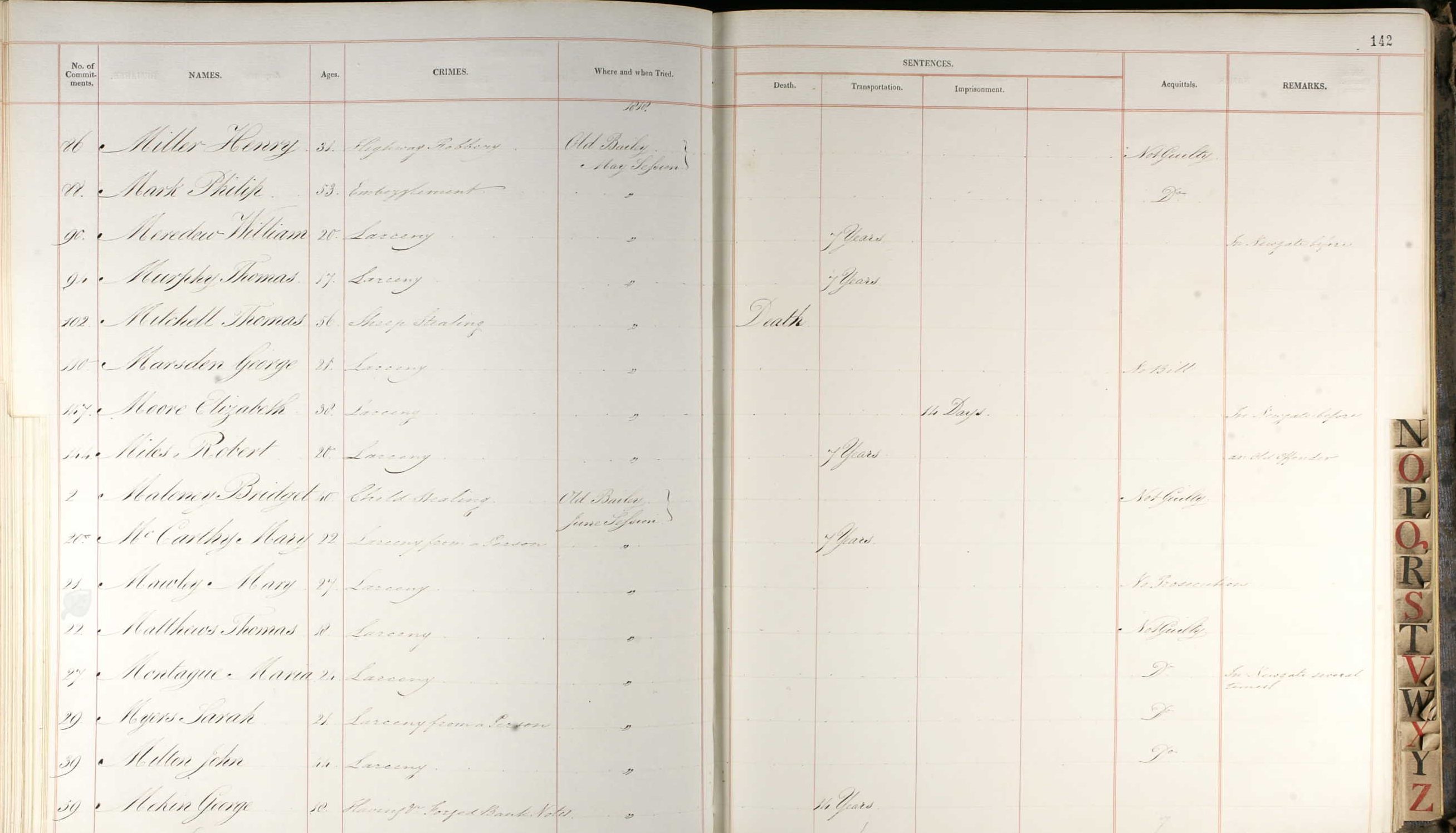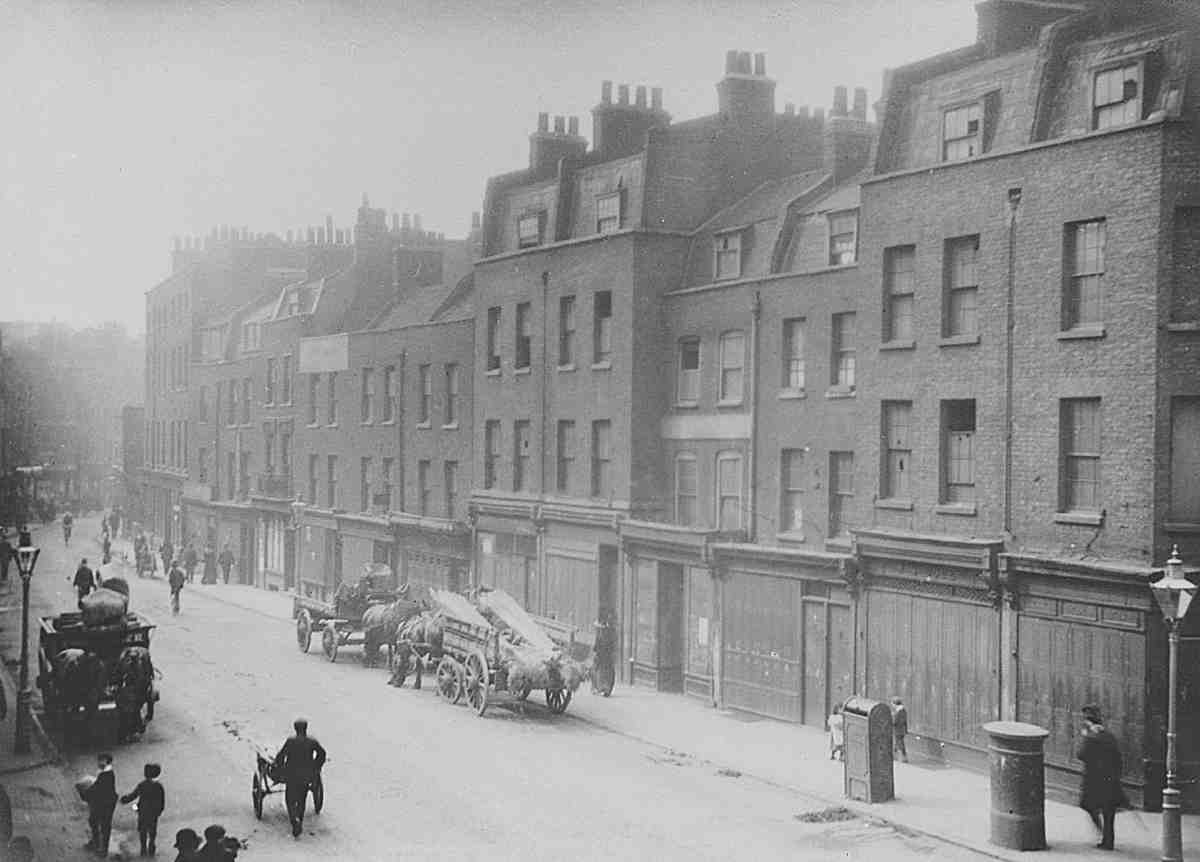This is about two of Emily Foreman’s uncles.
In Islington at 5 Hollingsworth St, North, in 1881, there is a very strange set-up. The house was shared between three households; there was Richard and Mary Parker, and their six sons, three teenage, three younger, the youngest being four. It was also shared with the Sable family with two sons, and two daughters. The census return for the third household in the building is as follows.
- George Foreman 61 head, wheelwright, wilts, warminster
- Carrie Foreman 45 wife surrey,lambeth
- Albert Foreman 41 son wheelwright, somerset,bristol
There is a lot in this that is very curious. The ages in this don’t appear to match up for it to be George Senior who should be 79, and was born in 1802 in Warminster and died in about 1870, and if it is George Junior he would be about 55, and not 61 years old. However they are right for Albert, and the professions, and places of birth are right.
But what is a lot stranger is the descriptions of “Head, Wife, and Son”. George Junior was born in 1826 in Warminster, like his father who was 24 when Geo Jnr was born. Al was born fourteen years later in 1840, in Bristol. In all the other census returns, Albert is referred to as George Senior’s son,and given his position amongst the family, it seems incredibly unlikely he isn’t. As we can see from the dates of birth below, George Senior, and Eliza, have a child every couple of years or so, or even closer, for almost twenty years.
- George Foreman Jnr. b. 1827
- Walter Foreman b.1829
- Seleana Foreman b. 1833
- John Laverton Foreman b.1834
- Richard Foreman b. 1835
- Joseph Benjamin Foreman b. 1837
- Albert Foreman b. 1840
- Alfred E Foreman b.1844
- Sophia A Foreman b. 1847
So, whilst it is technically possible that fourteen year old George becomes a father in Bristol in 1840, it does seem more than improbable. It seems even more improbable, to the point of absurdity, that he would end up with a son that he gets his parents to bring up as his younger brother.
So we’re faced with the next part of the puzzle, “Wife, and Son”. Why is Al listed as a son, rather than a brother? There is nothing odd in putting down brother in the box describing the relationship to the head of the household. In fact most obvious descriptions of the relationship are used at the time. It could be an enumerator’s error, or it could be what they were told.
The following puzzle is Carrie Foreman; if she is George Junior’s wife, then she may be his second wife, and there is no trace of a marriage; or she is his only wife, and called herself Catherine initially, and over time changed to Carrie, and then Caroline.
George got married in the summer of 1864 to Catherine Fitzpatrick, somewhere in Westminster, when he was either 38 or 43, and she was ten years younger. They were living as husband and wife at 48 Borough Road, in Southwark in 1871; even then George is unclear about his age, and says he was five years older (50) than he actually was (45). Having said that, it may well answer the fact that he says he is also five years older than he actually was in 1881 as well. Catherine also gives her age as 40, rather than 35.
Catherine Fitzpatrick seems to have been born sometime between 1831 and 1835. Given the variety of ages that Catherine/Carrie/Caroline seems to gives in the census returns, they are probably the same person.
Caroline Foreman died in Lewisham on the 26th July 1905, and her age is recorded in the Parish register as 70. This would mean she was born in about 1835, which would mean her age in the 1881 census would be about right, and that it is the same woman. In 1891, she says she is 48, when she is in fact 55, and Albert also takes two years off his age, and says he is only 49. By 1901, Al is back to the correct age, but Carrie is still describing herself as three years younger. There’s nothing wrong with this Madonna has been doing it for years.
However this does all rather skirt around the head/husband – wife/sister-in-law- son/brother thing. By 1891, Al and Carrie are living as man and wife, and George has disappeared. Al and Carrie continue to call themselves husband and wife in the 1901 census, and presumably until his death in Poplar in 1902, and hers in Lewisham in 1905.
This raises the obvious question, when did Albert’s and Carrie’s relationship start? Al is probably four years younger than she is, and fourteen years younger than his eldest brother George. Both men are working as wheelwrights, so it does make some sense that Al is sharing with his brother, and sister-in-law rather than with other members of the family. It also makes some sense for George having a younger man working alongside him, as it was tough physical work. Campbell’s The London Tradesman (1747) says the following
“The Wheelwright is employed in making wheels for all manner of Carriages; I mean the wooden work. This business requires more Labour than Ingenuity; a Boy of weakly Constitution can make no hand at this Trade. It is abundantly profitable to the Master and a Journeyman earns from 15 to 20s. per week. A Youth may be bound about Fifteen.
The Cart-Wheeler differs nothing from the Coach-Wheeler, but that he makes wheels for carts only and is not obliged to turn his work so neatly finished as the other.
A boy designed for this trade requires to be of strong robust Constitution and ought not to be bound till the age of 15 or 16, when his joints begin to knit and he has arrived at a moderate degree of strength. A Journeyman earns from 12 to 15s. a week.”
We don’t know from the 1881 census how many rooms there were in Hollingsworth Street, but it is unlikely they were living in more than a couple. In 1891, Al and Carrie were living in two room, in Bow, and ten years later they were in one room in Parnell Road. So I think we can safely assume they were living in very close proximity in Hollingsworth Street, if not actually on top of each other.
In his Life and Labour of the People in London Charles Booth mapped out poverty levels in London from 1886, and literally walked the streets to record it. Booth categorized each street as a different colour, and category from A. to H. ranging from occasional workers/semi-criminal to upper middle class/wealthy. He describes Hollingsworth Street as a mixture of Light Blue, and Purple, or C,D.
“Light Blue: Poor. 18s. to 21s. a week for a moderate family”
“Purple: Mixed. Some comfortable, others poor”
“C. Intermittent earning. 18s to 21s per week for a moderate family. The victims of competition and on them falls with particular severity the weight of recurrent depressions of trade. Labourers, poorer artisans and street sellers. This irregularity of employment may show itself in the week or in the year: stevedores and waterside porters may secure only one of two days’ work in a week, whereas labourers in the building trades may get only eight or nine months in a year.”
“D. Small regular earnings. poor, regular earnings. Factory, dock, and warehouse labourers, carmen, messengers and porters. Of the whole section none can be said to rise above poverty, nor are many to be classed as very poor. As a general rule they have a hard struggle to make ends meet, but they are, as a body, decent steady men, paying their way and bringing up their children respectably.”
Let’s assume that the Foreman household is at the upper end of the scale and are “decent steady men, paying their way” . It is still fascinating to speculate as to when Al and Carrie’s relationship started, and why they never bothered to get married.
By 1891, they were living in two rooms at 12 Libra Road, Bow. Another shared house, with three families living there. The Barlass family live in four rooms. William Barlass is a fourty year old carpenter from Manchester, Annie Barlass was from Bristol, and the family seems to have started married life in Bristol with the three eldest children born there, before moving to London.They had five sons, and three daughters
Also there, in one room, are Mary Ragan, and her 15 year old nephew George Rolph, both born in the East End, in Hackney and Barking respectively. She’s a tailor, and dressmaker, and George is working as a messenger boy in the Port of London
By 1901, they are living in one room at 70 Parnell Road Bow, in another shared house with Ambrose Moyonowicz, his wife Mary, and their seven daughters, and one son. Ambrose is a woodworker. The Moyonowiczes are living in four rooms between them. Rather bizarrely, for someone with an eastern European surname like Moyonowicz, Ambrose says he was born in Swindon. Also in the house are 24 year old Thomas Marchant, his wife Maud, and their 6 month old baby, also called Maud. Tom is a line worker, and they are also in one room
Al dies two years later in Poplar aged 63, followed by Carrie two years after him at the age of 70.


 Broad Street station was next door to, and to the west of Liverpool Street Station. In fact one of the original entrances to Liverpool Street tube station is still in Broad Street. The remainder of the old Broad Street station is now the part of the Broadgate office complex.
Broad Street station was next door to, and to the west of Liverpool Street Station. In fact one of the original entrances to Liverpool Street tube station is still in Broad Street. The remainder of the old Broad Street station is now the part of the Broadgate office complex.











